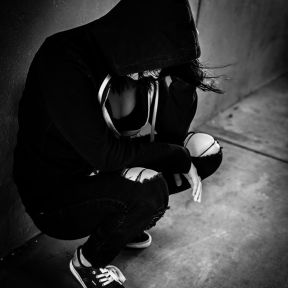Therapy for Depression
Good therapy is like driver’s education for the mind. It enables people to understand what sets off their descent into depression and not only helps them develop suitable tools for finding their way out but teaches ways of regulating difficult emotions going forward. Clinicians and researchers have long known that a prime contributor to depression is the inability to process negative emotions in constructive or adaptive ways. Medication can relieve some of the psychic pain of depression, but it does not help people learn good ways of coping with distressing experiences and feelings—which make them feel overwhelmed—or learn how to manage the kinds of thoughts that can trigger such feelings. As a result, they are always at the mercy of circumstances, ever-susceptible to depression. The goal of psychotherapy is to build the pillars of mental health.
On This Page
- Why is therapy important for treating depression?
- Does therapy help in ways that medication does not?
- When is therapy used in conjunction with medication?
- How is therapy coordinated with medication use?
- What does therapy do?
- How effective is therapy?
- When is it best to seek therapy for depression?
- Why is it important to seek therapy promptly?
- How soon will I notice any effect?
- How will know that therapy is working?
- How long will therapy be needed?
- Can any type of therapy help?
- Are some types of therapy especially effective against depression?
- Is group therapy ever helpful?
- Can therapy help someone who is suicidal?
- How is progress evaluated in therapy?

From one perspective, depression can be seen as a state of depletion that occurs when problems overwhelm a person’s resources for solution. Therapy aims directly at the development of new solution patterns. It is at least as effective as medication during the period of treatment but its effects last longer and it is effective in preventing recurrence of depression. The coping techniques, problem-solving skills, and understanding of one’s own vulnerabilities gained during therapy are useful over the course of a lifetime.
Many studies have evaluate the effects of psychotherapy vs. medications. Medication for depression may relieve symptoms more quickly than therapy, but the symptom relief lasts only as long as medication is taken. Therapy has enduring effects; it not only relieves symptoms of a current episode of depression but reduces the risk of future episodes. Studies show that both types of treatment change the way the brain functions. Therapy gives people insight into how their own patterns of reactions to negative experience set off a downward spiral of thinking that lead to depression. It also fosters the development of coping skills that interrupt the chain of reactivity. Further, therapy restores a sense of control, something no medication can deliver. Perhaps most important, the bond that develops between patient and therapist becomes an instrument of support and recovery.
Because psychotherapy can take many weeks to months to have an effect, psychotherapy is frequently prescribed along with medication for people needing relief from severe depression, although less than a third of patients respond to the first drug they’re given. A new crop of medications for depression—all related to psychedelic drugs—appears to open new neural pathways to recovery and is proving especially powerful when used in conjunction with intensive psychotherapy. One such drug, ketamine, is fast-acting and has been shown to reduce suicidal ideation; administered intravenously, it is increasingly used for suicidal patients.
Combination psychotherapy and pharmacotherapy (medication) for major depression is very common, both for acute and chronic forms of the disorder. Treatment with both modalities may begin simultaneously or be sequenced. Sometimes reduction in agitation or cloudiness of thinking or the abatement of psychic pain by medication is necessary before patients can be responsive to psychotherapy. Other times, medication can boost the effects of psychotherapy.
Typically, a psychiatrist or other medical doctor prescribes medication, monitors the response, and makes adjustments to the dosage or changes the type of medication as needed, while the psychotherapy is carried out separately by a psychologist or other mental health professional. Because the interaction between therapist and patient provides a prime window into a patient’s thoughts and feelings, the psychotherapist is also ideally positioned to observe the response to antidepressant drugs and deliver invaluable feedback to the prescribing physician. Patients do best when the two professionals are in regular contact coordinating their respective treatments rather than delivering them independently..
Therapy is just as “real” a treatment for depression as medication. It produces long-lasting changes in brain function that show up in brain imaging studies. It changes patters of connectivity between brain regions, enabling patients to exert more cognitive control over emotional reactivity.
Because major depression is a recurrent disorder, psychotherapy has the dual value of relieving current suffering and preventing future episode of distress. It also reverses the social and occupational decline depressed patients typically experience. Through a strong alliance with a therapist, in meetings, or sessions, typically held weekly for a limited period of time, patients learn to identify the kinds of inner and outer experiences that overwhelm them emotionally and set off the downward spiral of negative thinking and feeling that incapacitates them. Patients also learn to identify the distorted thinking patterns that contribute to hopelessness and despair. By discovering their own resources for problem solving, patients are equipped to regain control of their life.
Therapy is highly effective provided patients complete a prescribed course of therapy. Recent data show that only 10.6 percent of depressed patients haver ever received weekly therapy during their treatment period, which is typically 12 to 16 weeks. But when they do, therapy is more effective than medication over the long term and the effects are more enduring. Patients are less likely to need a second course of treatment and less likely to relapse. In fact, studies show that a single course of psychotherapy works at least as well as keeping patients on medication.
After two weeks of persistent sadness or loss of capacity for pleasure, along with a sense of hopelessness or guilt and such physical changes as appetite shifts and early-morning awakening, it is wise to consider the possibility of major depression. Depression is diagnosed after a thorough health examination rules out treatable physical conditions, such as thyroid disorder, that can create many of the same symptoms. Therapy should be started as soon as a diagnosis of depression is rendered. The longer an episode of depression goes untreated, the more difficult it becomes to treat, the greater the possibility of future episodes, and the greater the possibility of inflammatory changes to the brain itself. Further, depression undermines functioning in every domain of life, including work and family; starting therapy soon minimizes the disruptive impact of the disorder.
Early treatment of depression is essential because depression itself changes the brain. Research shows that depression is linked to inflammatory changes in the brain. As a result of such changes, the longer an episode of depression lasts, the greater the likelihood of a recurrence of depression. Untreated, depression can become a progressive disease leading to neurodegeneration. Untreated depression especially compromises the prefrontal cortex, the area of the brain essential for reasoning and decision-making and enabling control of emotional reactivity. Therapy helps patients develop the skills not just to beat back a current episode of depression but to prevent future ones as well.
Research indicates that 50 percent of patients recover within 15 to 20 sessions, and many patients experience some improvement within a few sessions. Patients differ in the nature and severity of their problem and in their progress, but most patients experience a gradual return of ability to function. They also notice a lessening of hopelessness. The first sign that depression is improving may be a reduction in sadness or reduced pessimism about the future. There may be a lessening of irritability or a renewed interest in something once enjoyed. Feelings of guilt may also begin to abate.
Feeling better is a good yardstick, but it is by no means the only measure of therapeutic effectiveness. Mental health professionals regularly assess the progress of therapy and rely on two important tools to monitor patient gains. One is their own experienced judgment of the patient’s ability to engage in the therapeutic process. The other is a standardized symptom rating scale that assesses patient standing on each of the constellation of symptoms of depression, from personal outlook to physical slowness. Has the veil on thinking or sluggishness of thought or speech persisted, lifted slightly, lifted significantly, or completely disappeared? Does the patient weep frequently, occasionally, or not at all? The most widely used symptom checklist is the Hamilton Rating Scale for Depression, often called the Ham-D.
Research indicates that 50 percent of patients recover within 15 to 20 sessions. As with drug therapy, patients fare better when therapy is continued for a period beyond symptom remission. There are three goals of psychotherapy. The first is response—an improvement in symptoms. Patients may begin to experience improvement within a few sessions. The second is remission—disappearance of all symptoms and a return to healthy functioning in all domains of life. There may be a temptation to stop therapy at this point, but the consensus of experts is that treatment should continue at least four months after disappearance of symptoms to ensure recovery (the third goal of treatment) and to maintain the ability to handle the stresses of daily life that challenge coping skills. Completing a full course of therapy is critical for full recovery.
For patients, recovery from depression requires understanding the kinds of events that precipitate a depressive response, awareness of their own psychological vulnerabilities, identifying distorted thinking patterns that lead to feelings of hopelessness, recognizing behavior patterns that exacerbate problems, developing problem-solving skills, and taking action even when they may not feel like it. An experienced therapist will gauge the best way to treat depression based on individual patient needs but incorporate all such goals into their treatment plan. However, there are several types of psychotherapy that specifically target one or more of these needs through treatment protocols that have been well-validated by extensive field-testing.
Depression is a multifaceted disorder, and it responds to therapies that specifically target one or another area of dysfunction. Four types of therapy have proved effective in patients with depression extensively studied during treatment and followed up for significant periods of time afterwards. They are: Cognitive and Behavioral Therapy (CBT), Interpersonal Therapy (IPT), Psychodynamic Therapy, and Behavioral Activation (BA).
CBT takes straight aim at the distorted ways of thinking—often acquired early in life—that are typical of depressed people, and study upon study has proved its effectiveness. It is based on the evidence that negatively-biased thinking and beliefs give rise to the feelings of hopelessness and despair that are typical of depression, and changing thoughts changes emotions. Studies show that in depression, dysfunction in neural circuitry inclines patients to a negative view of themselves, the world, and their future, and therapy effectively alters patterns of neural transmission. CBT involves an active collaboration between patient and therapist that guides patients to challenge and test their own thoughts and beliefs, try out new behavioral strategies, and to curb reactivity to distressing situations.
Like CBT, IPT is a short-term, present-oriented therapy. It’s primary target, however, is the difficultiy in interpersonal (social) functioning that both gives rise to and results from depression. Many studies support the value of ameliorating interpersonal distress as a route to relieving depression. IPT focuses on four major interpersonal problem areas—unresolved or complicated grief, struggles with a significant other (role disputes), role transitions such as the end of a marriage or becoming physically ill, and frank deficits in interpersonal skills. Patients learn to understand which problem area is linked to onset of their episode of depression and to directly redress those difficulties, often by learning how to better express their emotions. With supportive guidance from the therapist, they learn new communication strategies and may even rehearse through role play new solutions to longstanding social difficulties.
Behavioral Activation is a short-term, evidence-based therapy that directly counters the avoidance patterns—loss of interest in and withdrawal from once-enjoyed activities—that are hallmarks of depression. BA fosters engagement in rewarding activity as a lever to change the negative feelings and disturbed mood that make depression so oppressive. Perhaps best regarded as a small slice of CBT applied intensively, Behavioral Activation assigns to patients activities of their own choosing—exercising, going out to dinner, getting together with friends, tackling a chore—known to bring them some measure of pleasure or sense of achievement. With active guidance from a therapist, patients come to understand the vicious cycle of depression and the role of activity itself to spark motivation and energy.
Psychodynamic therapy is a modern evolution of psychoanalysis, and it is similarly aimed at the development of insight into oneself, specifically understanding of the problem situations and personal vulnerabilities that set the stage for depression. The therapist takes an active role in guiding therapy, and the relationship between therapist and patient is a major conduit of recovery. While CBT and IPT are staunchly present-focused, psychodynamic therapy may examine current difficulties in the context of earlier life experiences and relationships.
Although depression is a very individualized disorder, with each patient exhibiting a distinctive patterns of symptoms, group therapy can sometimes be helpful. One area of special value may be group education in coping skills, problem-solving skills, and techniques for managing difficult emotions, as deficits in those areas are known to underlie most expressions of depression. Such treatment is often labeled psychoeducation and it may be especially appealing to people who cannot afford an individual course of therapy or who feel stigmatized by it. Whatever the format of depression group therapy, it can offer some advantages over individual therapy. Most obviously, it counters the social isolation that is a major precipitant of depression. Groups also allow for working though the dysfunctional relationship patterns that contribute to depression. Further, group interaction provides a forum for credible challenges to the negative evaluations depressed people make about themselves.
Studies show that about 5 percent of depressed patient have thoughts about suicide—suicidal ideation. Suicide is seen as a way of escaping the mental pain of depression, which distorts patterns of thinking and feeling so that sufferers cannot see a way out their current state of mind or envision a future possibility of feeling better.
Good therapy includes a specific assessment of suicide risk separate from the depression evaluation. It also includes specific measures to manage the risk of suicide in the present and the future. Many therapists draw up anti-suicide pacts with their patients. A contract may be written or verbal but, either way, patients at risk agree to commit no self-harm and to call the therapist if they ever have thoughts of ending their life, or to call an emergency number such as 911. In addition, studies show that such widely used treatments for depression as cognitive behavioral therapy (CBT) can be very helpful when adapted to specifically target the ways distorted thinking leads to depressive despair and thoughts of suicide.
While unstructured interactions with patients under their care can provide a window into patient functioning, therapists providing good care make regular assessments of a patient’s clinical status using criteria that have been validated in many studies. To know whether and how much depression is improving, they regularly monitor treatment progress by measuring the severity of multiple symptoms of depression on standardized scales. The most widely used assessment instrument is the Hamilton Rating Scale for Depression, or Ham-D, which gauges progress in 21 constellations of symptoms, from level of sadness to degree of guilty feelings to lack of energy to sleep problems. Severity is rated for each cluster of symptoms. Comparison of results over several sessions provides an accurate picture of treatment effectiveness and indicates areas where more intensive work may be needed.














